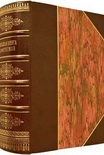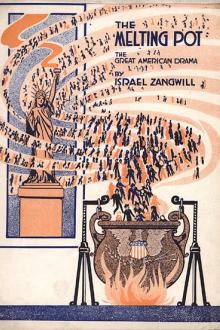No Modernism Without Lesbians, Diana Souhami [love books to read txt] 📗

- Author: Diana Souhami
Book online «No Modernism Without Lesbians, Diana Souhami [love books to read txt] 📗». Author Diana Souhami
As for serializing Ulysses in The Egoist, she got as far as five instalments. Readers cancelled subscriptions and complained of its unsuitability for family reading. So Harriet again abandoned serialization attempts and tried to bring Ulysses too out in book form. No printer would touch it. She even approached Virginia and Leonard Woolf, at T.S. Eliot’s suggestion, in the hope they would set it on their Hogarth press. She went to tea on Sunday 14 April 1918 but got short shrift. Virginia Woolf wrote in her diary:
I did my best to make her reveal herself in spite of her appearance, all that the editress of the Egoist ought to be, but she remained unalterably modest, judicious and decorous. Her neat mauve suit fitted both soul and body; her grey gloves laid straight by her plate symbolized domestic rectitude; her table manners were those of a well bred hen. We could get no talk to go. Possibly the poor woman was impeded by her sense that what she had in the brown paper parcel was quite out of keeping with her own contents. But then how did she ever come in contact with Joyce and the rest? Why did their filth exit from her mouth? Heaven knows. She is incompetent from the business point of view and was uncertain what arrangements to make… And so she went.
It was a high-handed dismissal of a courageous woman who bucked the establishment in defence of women’s rights and freedom of speech. The ‘poor woman’ had travelled far from domestic rectitude. She challenged the prudery of the Establishment and the censorship of the judiciary and did much to ‘bring to the surface what may be found’.
Ulysses wandered overseas… and was again in trouble
In New York in 1918, Margaret Anderson, with her partner Jane Heap, wanted to serialize Ulysses in their magazine The Little Review. Born in 1886 in Indianapolis, one of three daughters with a mother from hell, Margaret’s principles for living were: first, not to do what you don’t want to do, and, second, to do what you do want to do. She started the Review in 1914, when she was twenty-eight. She intended it to be the most interesting magazine ever launched and her byline was ‘A Magazine of the Arts making no compromise with the public taste’.
Margaret Anderson and Jane Heap © Collection Centre Pompidou
In the March 1915 issue, she declared her lesbian identity and her championing of homosexual rights. ‘With us’, she wrote, ‘love is just as punishable as murder or robbery…’ She voiced outrage at those ‘tortured and crucified every day for their love – because it is not expressed according to conventional morality’. People went up to her in the street to congratulate her.
Like Harriet Weaver, Margaret Anderson saw patriarchal government as coercive and violent. ‘Applied Anarchism’ was The Little Review’s credo. She went to lectures by the anarchist Emma Goldman, smoked cigarettes, wore trousers and was quoted in the Washington Post for saying:
Why shouldn’t women do anything they want to do? […] We are all in bondage to social convention and only by rebellion may we break those bonds. I have been in revolt since I was eight.
She met Jane Heap in 1916, described her as ‘the world’s best talker’ and thought her ideas more interesting than anyone else’s. ‘We formed a consolidation that was to make us much loved and even more loathed.’
They lived together, spoke out through their magazine and published contributions from Sherwood Anderson, Mina Loy, Dorothy Richardson, Ernest Hemingway, Hope Mirrlees, Gertrude Stein, W.B. Yeats, Djuna Barnes. None of their contributors got paid.
I don’t remember ever having explained to anyone that the Little Review couldn’t pay for contributions. It was quite taken for granted that since there was no money there would be no talk of remuneration.
The September 1916 issue had thirteen blank pages. Margaret Anderson said there was not enough good stuff to fill them. She called these empty pages a ‘Want Ad’. Jane Heap filled some of the other pages with drawings of Margaret playing the piano, and the two of them horse-riding and attending anarchist meetings.
Mustir
Only two unsolicited pieces were ever accepted for The Little Review. One, a poem called ‘Mustir’, was from Baroness Elsa von Freytag-Loringhoven. She dedicated it to Marcel Duchamp and his painting Nude Descending a Staircase. A bit of it read:
The sweet corners of thine tired mouth Mustir
So world-old tired tired to nobility
To more to shame to hatred of thineself
So noble soul so weak a body
Thine body is the prey of mice.
It went on like that. The baroness lived in two rooms in New York with three dogs, and made art out of tinfoil, garbage and beads. Her husband had shot himself in Germany at the beginning of the war, which she said was the bravest act of his life. She wore a kilt and white spats and
hanging from her bust were two tea-balls from which the nickel had worn away. On her head was a black velvet tam o’shanter with a feather and several spoons – long ice-cream soda spoons. She had enormous earrings of tarnished silver and on her hands were many rings, on the little finger were rings filled with shot which rang like bells when she waved her hands. Her hair was the colour of a bay horse. She clanked when she walked because of all her bracelets.
Ezra Pound became the magazine’s foreign editor in May 1917. He had co-founded the short-lived journal BLAST in June 1914, just before the First World War, at the same time as The Little Review was launched. One passage in the first issue read: ‘Blast France,





Comments (0)